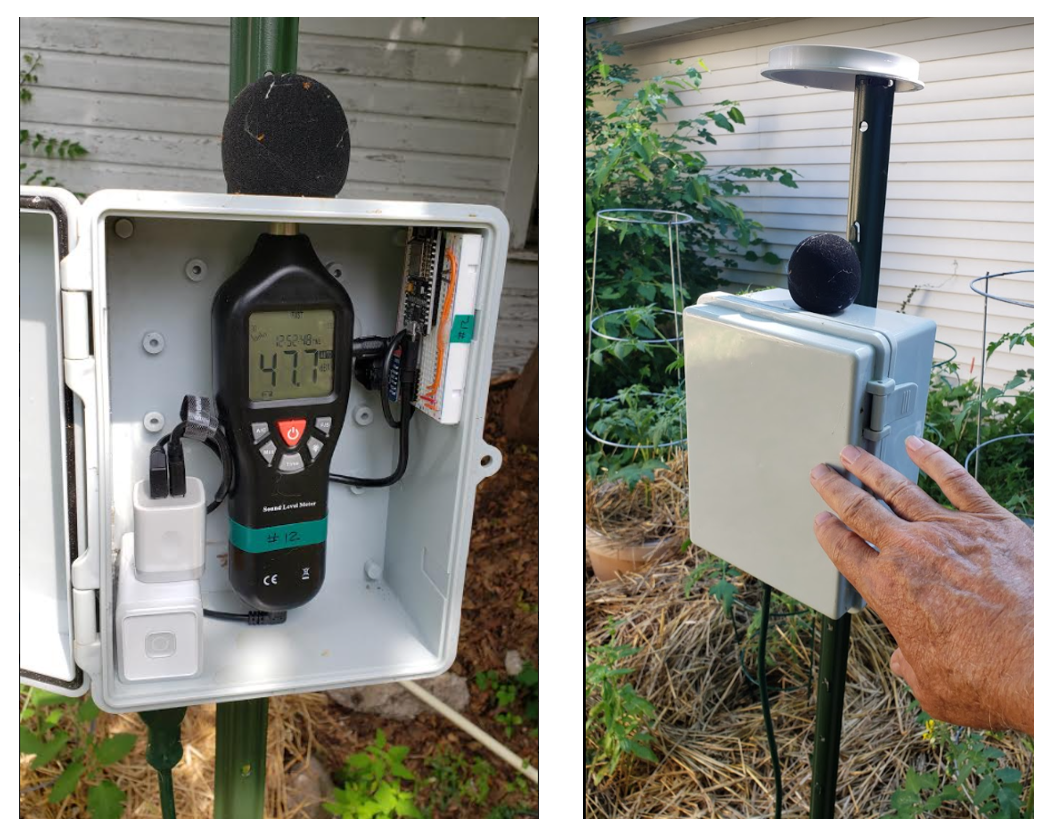
Sound-level meters are hosted by volunteers in the area. Each meter consists of a commercial sound-level meter (Gain Express SLM-24) that is connected to a microprocessor (ESP8266).
The meter produces a voltage that is proportional to (A-weighted) decibels. The voltage signal is read by the microprocessor about 1,000 times per second, converted back to decibels and transmitted once a second to a central server, where the information is stored in a permanent database for live mapping and later analysis.
The transmitted data include one-second average decibel levels as well as the maximum and minimum impulse (1/8th second) readings within the second.
The meters have a listed accuracy of ± 1.5 dB. They are further periodically individually calibrated to 94 and 114 dB with a NIST-traceable sound-level calibrator (REED R8090).

Side-by-side testing has shown that the meters are less accurate below 50 dB, which are of less interest for this application. Although the meters are listed as having a dynamic range of 30 to 120 dB, experience shows that they actually have varying "floor" readings of 40 to 50 dB: below these levels, the meter indicates a constant sound level, even if actual level is lower.
Meters are typically mounted on a stake about 4 feet off the ground in a back or side yard. Some meters are attached to deck balconies or fence railings.